Brian Meert's Blog, page 95
January 28, 2019
Facebook Announces Stricter Rules for Groups and Pages
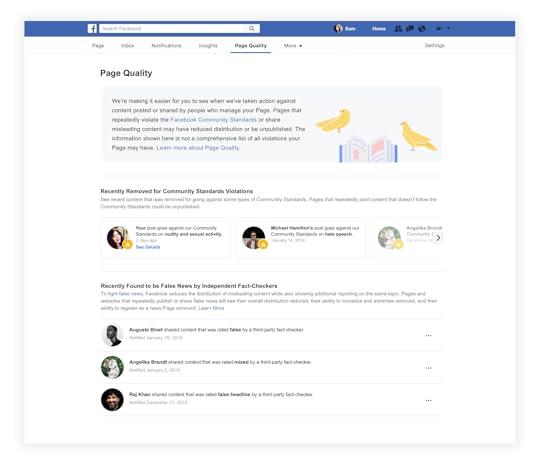
January 28, 2019
Anne Felicitas writer at AdvertiseMint, Facebook marketing agency
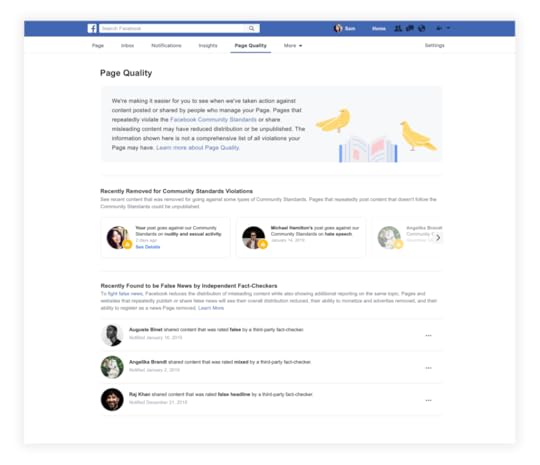 
Photo Courtesy of Facebook Newsroom
To maintain the quality of pages and groups that exist on its platform, Facebook is enforcing stricter rules that prevent policy violators from thriving. As stated on its Facebook Newsroom announcement, the social media company is removing pages and groups by admins that previously violated its Community Standards.
According to the Newsroom post, even though specific pages or groups did not violate Community Standards, Facebook will remove them if their admins violated rules using different pages or groups. Currently, Facebook bans admin violators from creating new pages or groups. However, Facebook is enforcing stricter measures after seeing violators use existing pages for the same purposes as the pages that were removed for violations.
To help page admins better their pages, Facebook is rolling out a quality page tab that gives admins a sense of where their pages stand in terms of quality. The tab contains two sections, one that shows content Facebook removed for violating Community Standards and one with content rated as false, “mixture,” or “false headline” by third-party fact checkers.
The quality tab does not provide a complete look into the page’s quality, however. Although Facebook will include content removed for policies related to hate speech, graphic violence, harassment, and bullying, it will not yet include content removed for spam, clickbait, and IP violations.
Facebook’s stricter policies should come as a warning to page admins—clean up your content or lose access to your pages and groups. In midst of Facebook’s platform cleanup, admins should use the quality tabs as a guide to areas of improvement.
By Anne Felicitas , editor at AdvertiseMint, best Facebook advertising agency
The post Facebook Announces Stricter Rules for Groups and Pages appeared first on AdvertiseMint.
January 25, 2019
Here’s Where Instagram Keeps All the Posts You Liked
 January 25, 2019
January 25, 2019Anna Hubbel, writer at AdvertiseMint, Facebook marketing agency

Have you ever liked something in your Instagram feed and wanted to show it to one of your friends later, but you couldn’t remember who posted it or where you saw it? There’s a simple solution to this problem. The Instagram app allows you to view posts that you’ve liked.
Here’s How
Step 1: Navigate to your Instagram profile. Select the menu icon at the top right of the screen.

Step 2: Select “Settings.”

Step 3: From the Settings menu, select “Posts You’ve Liked.”

Step 4: You should now be able to see all the Instagram posts you’ve liked.
Now you’ll never be caught in the awkward position of being unable to recall where you saw that Instagram post you liked so much!
Written by Anna Hubbel, writer at AdvertiseMint, best Facebook advertising agency
The post Here’s Where Instagram Keeps All the Posts You Liked appeared first on AdvertiseMint.
Twitter Is Testing the Original Tweeter Tag to iOS and Android

January 25, 2019
Anne Felicitas writer at AdvertiseMint, Facebook advertising agency
 
Charles Deluvio / Unsplash
The new year has barely begun, yet social media company Twitter has already planned several changes to its app. According to Tech Crunch, Twitter is testing an Original Tweeter tag to a small group of iOS and Android users.
  A screenshot of the Original Twitter tag posted by user Frederic Lardinois to his Twitter timeline
 A screenshot of the Original Twitter tag posted by user Frederic Lardinois to his Twitter timelineThe tag, which appears underneath users’ handles, distinguishes the user who started the thread from the others, keeping the comments section better organized. It also helps preserve authenticity and combat scams in the platform. In December of last year, The Verge reported on a bitcoin scam that proliferated on Twitter: Fake Elon Musk accounts joined threads started by the Tesla CEO, convincing users into sending bitcoin to a fake bitcoin mining company. The Original Tweeter tag will make it more difficult for scammers to pose as real users.
This new tag is one among a slew of tests the company began this year. Recently, Tweeter announced a beta app that will contain drastic changes to its interface. The test includes highlighted comments, hidden engagement buttons, and pinned posts to the timeline. Twitter is certainly taking the adage “new year new me” to a whole different level. Hopefully people are open to the changes.
By Anne Felicitas , editor at AdvertiseMint, Facebook advertising agency reviews
The post Twitter Is Testing the Original Tweeter Tag to iOS and Android appeared first on AdvertiseMint.
January 24, 2019
Share Netflix Recommendations to Instagram Stories Using New iOS Feature
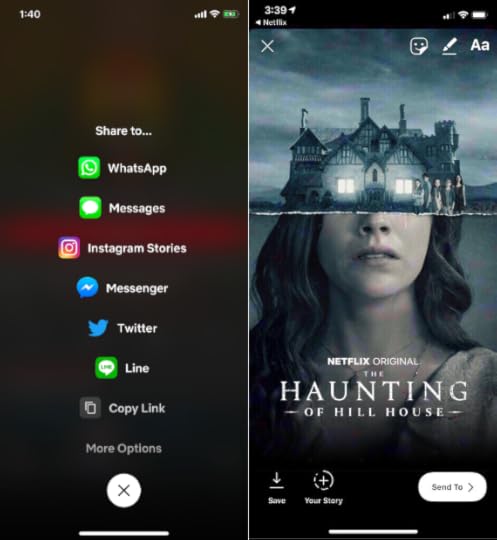 January 24, 2019
January 24, 2019Anne Felicitas writer at AdvertiseMint, Facebook ads comapny
 
Photo Courtesy of Variety/ Unsplash
After watching Netflix’s interactive, choose-your-own-adventure movie, Bandersnatch, I quickly went to Facebook and wrote a raving review, praising the movie for its innovation. When movie fans like me see a beloved movie, we flock to social media to breathlessly declare our praises. It seems Instagram recognizes this habit given its partnership with Netflix.
According to Variety, Netflix integrated with Instagram to allow iOS (and soon Android) users to share their favorite movies and shows to Instagram Stories. If users are particularly pleased with a title that they saw, they can easily click the title and choose the “Share to…Instagram Stories” option. If compelled, users can add text, stickers, and gifs to the default art. Users can either send their recommended title to their Stories or to specific friends from Direct.
This partnership not only helps movie fans gush about their favorite films, but it also helps Netflix drive more traffic to its app and increase views, especially when people on Instagram are already open to Netflix recommendations. (I’ve numerous times seen friends ask for recommendations on Stories.)
Instagram is just one out of several partnerships Netflix made in May of last year. The movie-streaming company also partnered with Spotify and Soundcloud, and I can’t wait to see what those partnerships will come up with.
By Anne Felicitas , editor at AdvertiseMint, best Facebook advertising agency
The post Share Netflix Recommendations to Instagram Stories Using New iOS Feature appeared first on AdvertiseMint.
Solving the 7 Reasons Users Aren’t Downloading Your Gaming App
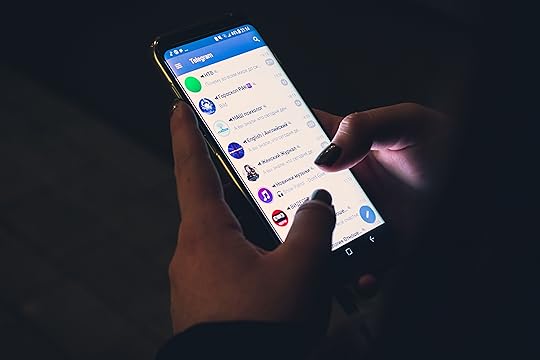 January 24, 2019
January 24, 2019Anna Hubbel, writer at AdvertiseMint, Facebook advertising agency
 
Christian Wiediger / Unsplash
The year 2018 was great for mobile games, racking up 76 percent of about $92.1 billion in app revenue. “But wait,” you interject, “Almost no one downloaded my mobile app game. What am I doing wrong?”
Facebook IQ and GFK performed a multi-country study to help game creators like you answer this question, surveying 3,200 mobile gamers ages 18 and older across Brazil, Germany, Indonesia, India, Japan, South Korea, Taiwan, and the United States. The study identified the causes of friction, anything that leads a gamer to abandon the mobile app’s download, purchase, or play stages.
According to Facebook, the following percentages reflect mobile gamers who have experienced at least one friction point at each stage:
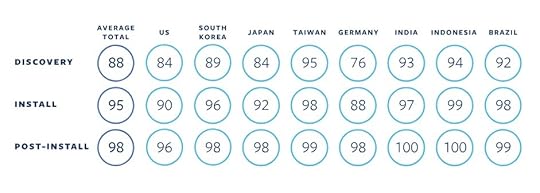 
Image courtesy of Facebook
To reduce any friction points for your mobile game, here are seven discoveries Facebook’s study found and how you can address them.
Poor Ad Quality
Seventy percent of the study’s participants said that during the discovery stage, a poor quality ad would influence them to not download the promoted game. Sensationalism, clickbait, and ugly creatives in ads are the top three major turn-offs for gamers. A poor-quality ad suggests a poor-quality game, so ads should meet gamers’ high expectations for their gaming experiences.
The Solution: Only put out high-quality ads. Images should have high resolution and the creative should look stunning, professional, and compelling. Ask yourself what would get you to click an ad and use that as guidance.
Ad Leads to the Wrong Page
An ad should direct gamers to a page that matches the message it’s promoting. According to Facebook’s study, 67 percent of gamers said ads that lead to the wrong page would cause them to drop off the path to download.
The Solution: Always test your ad multiple times to ensure it directs gamers to the game and page matching the ad’s message. For example, if your ad includes an “Install Now” call-to-action, gamers should be directed to where they can download the game when they click it. If you have a “Learn More” call-to-action, gamers should be directed to a page that gives them more information about your game.
Irrelevant Ads or Offers
 Businessman Pressing Smartphone Screen Finger
Businessman Pressing Smartphone Screen FingerGamers aren’t going to download games through ads if they aren’t relevant to them. For example, some gamers prefer sports over fantasy, and vice versa. Sixty-six percent of the study’s participants indicated irrelevant ads or offers as reason not to download a game.
The Solution: Do your audience research and take advantage of the targeting resources available to you, such as Facebook’s Lookalike and Custom Audiences. These will help you deliver ads only to gamers who are most likely to download your game.
Difficulty Understanding the Game through the Ad
If the ad doesn’t clearly and succinctly describe the game in the ad, gamers aren’t going to put in the extra effort to understand it— they will just move on. Sixty-two percent of the study’s participants said they would pass by an ad if they did not understand the content of the game from the ad.
The Solution: Do not overwhelm your audience with information about your game. Use simple language and clearly describe the game. You should employ effective copywriting strategies to help your audience easily understand the game you’re promoting.
It Takes Too Long to Download
Once a gamer clicks on the ad and starts to download the game, it should be smooth sailing from there. If a game takes too long to download during the install stage, 69 percent of gamers said they would give up on it.
The Solution: Keep your initial download size small. You can offer features of the full app through in-app updates.
The Game Looks Difficult to Play on Mobile Devices

A game that is not optimized for mobile will likely suffer the consequences, as players typically want something that’s convenient and easy to play. The study found that 65 percent of gamers dropped off during the install stage because the game looked too difficult to play on a mobile device.
The Solution: Optimize your game for mobile screens. Your game should be easy to play on a vertically formatted screen on any device.
Request to Access Friend List
When a game asks for access to the gamer’s friend list via social media, the gamer gets suspicious. The game suddenly feels intrusive. Sixty-four percent of the study’s participants said when a game requests access to their friends list, they jump ship.
The Solution: Do not request access to gamers’ friends lists. If you want to spread the word about your game, periodically suggest to the gamer to share their progress on social media throughout the game.
Game On
Now that you know what friction points to avoid, you’re ready to rack up those app downloads through effective advertising. But be careful! You don’t want your gamers to experience ad fatigue.
Written by Anna Hubbel, writer at AdvertiseMint, Facebook advertising agency reviews
The post Solving the 7 Reasons Users Aren’t Downloading Your Gaming App appeared first on AdvertiseMint.
January 23, 2019
Is Someone Impersonating You on Instagram? Here’s What to Do
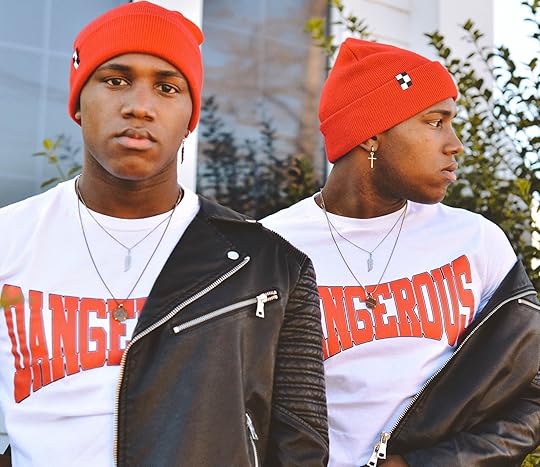 January 23, 2019
January 23, 2019Anna Hubbel, writer at AdvertiseMint, Facebook ads agency
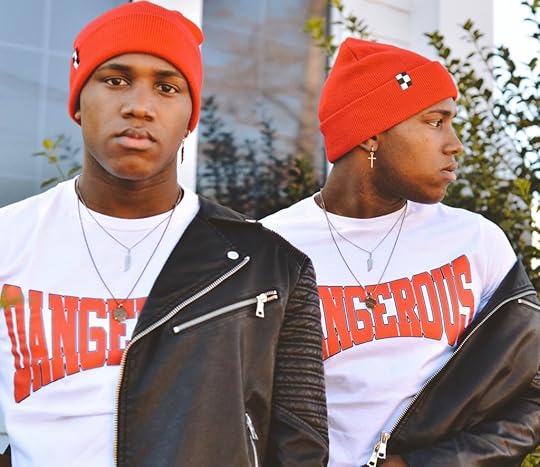 Parker Whitson / Tech Crunch
Parker Whitson / Tech Crunch Just about everyone uses Instagram. Unfortunately, impersonators like to use the platform as well. Impersonators create fake accounts and steal information to make themselves look like someone else. It can happen to anyone: a business or brand, a public figure, or simply an average user. It’s a sneaky and violating practice in which someone tries to steal your Instagram identity.
Are you a victim of an Instagram impersonator? Thankfully, Instagram has resources that help you report impersonating accounts. This article walks you through the process of reporting a case of Instagram impersonation.
How to Find Out if Someone Is Impersonating You
If you don’t know for sure that you’re being impersonated, the easiest way to find out is to do a simple Google search. Enter your name, followed by “Instagram,” in the search bar. If your name appears in the search results, click on the link. Are any of the photos yours? If so, you’ve got an impersonator on your hands.
You can search your name directly in Instagram’s search as well. Friends may also alert you if they’re getting follower requests from an account pretending to be you. If they do, ask them to send you the link to the fake account and then report it immediately.
How to Report an Imposter Account
These are the steps to reporting an imposter account from a desktop computer.
Step 1: Navigate to the impersonator’s Instagram profile. Search for the name the imposter profile uses or have your friends (if they spotted the account) send you the link.

Step 2: Select the three-dot menu at the top right corner of the fake account’s profile page.

Step 3: Select “Report User” from the menu that appears.

Step 4: Select “Other” from the list of reasons for your report.

Step 5: Select “Impersonation” from the list that appears. Instagram will then confirm and thank you for submitting the report.

If you do not have an Instagram account, but discover a profile impersonating you, you need to complete the form, accessible through the Instagram Help Center, that looks like this:

You will need a photo of a government-issued ID to complete the form, as well as the full name and username listed on the account that you’re reporting.
What Happens Next
Instagram will review your report and take action if it confirms that the account is, in fact, impersonating you. Keep in mind that Instagram only responds to reports submitted by the person who’s being impersonated or a representative of the person who’s being impersonated, such as a parent or legal guardian. If someone is impersonating you, you should be the one to report it.
If Instagram determines the other account to be an imposter, it will reach out to the user and remove the account. Instagram may also advise you to block the fake account to prevent it from collecting any additional information from your profile.
The platform does not specify whether it shares your name and personal information with the user who is impersonating you after you file a report, but its parent company Facebook does state that it keeps your information private. Instagram also isn’t clear about how long it takes to review a fake account report or who reviews it.
How to Get Verification for Your Business or Brand
If you’re a business, brand, celebrity, or public figure, one way to combat an Instagram impersonator is to get verification for your account. Verification gets you a blue badge that tells users that your account is authentic—you are who you say you are. Anyone who copies you will be unable to obtain the same verification badge if you already have it.
Below are the four main factors that determine whether you meet Instagram’s verification criteria:
Authentic: Your account must represent a real person, registered business, or entity.
Unique: Your account must be the unique presence of the person or business it represents. Only one account per person or business may be verified, with exceptions for language-specific accounts. Instagram doesn’t verify general interest accounts (example: @puppymemes).
Complete: Your account must be public and have a bio, profile photo, and at least one post. Your profile can’t contain “add me” links to other social media services.
Notable: Your account must represent a well-known, highly searched-for person, brand, or entity. Instagram reviews accounts that are featured in multiple news sources and doesn’t consider paid or promotional content as sources for review.
Your account must also adhere to Instagram’s Terms of Service and Community Guidelines. Instagram will remove your badge and may even delete your account if you provide false or misleading information at any point in the verification process.
Here are the steps to apply for a verification badge through the Instagram app:
Step 1: Login to your account and navigate to your profile. Select the menu icon at the top right corner of the screen.

Step 2: Select “Settings.”

Step 3: Scroll down to where it says “Request Verification” and select this option.

Step 4: Complete the form that appears. Make sure you have your photo ID ready to upload. Once you’ve completed the form, click “Send.”

What Happens Next
Instagram will review your request and send you a notification if your application is approved. Processing time will vary, depending on how much data Instagram needs to sort through to determine whether your account is authentic. If your request is rejected, Instagram says you can submit a new request after 30 days. While you’re waiting for verification, Instagram suggests letting your followers know you’re authentic by linking to your Instagram account from your official website, Facebook page, YouTube, or Twitter account.
Stay True to You
As long as you’re honest, Instagram will see that your account is the authentic one and will be able to easily identify the posers. If you file a report or submit verification, be patient. It’s infuriating to know someone is out there trying to get away with impersonating you, but nothing changes the fact that you are the truth and the imposter is the lie. The same holds true if someone is impersonating you on Facebook.
Written by Anna Hubbel, writer at AdvertiseMint, Facebook marketing agency
The post Is Someone Impersonating You on Instagram? Here’s What to Do appeared first on AdvertiseMint.
Trust in Social Media Is Declining, but Influencers’ Reputation Are Untarnished
 January 23, 2019
January 23, 2019Anne Felicitas, editor at AdvertiseMint, Facebook advertising agency
 
Rawpixel / Tech Crunch
Buying an item online, especially from social media platforms, is a gamble. On the one hand, shoppers can purchase a beautiful item that brings them giddy joy. On the other hand, they can buy from a scammer who either ignores their inquiries about an unshipped item or delivers to them a flimsy product that, although sold for 30 dollars, clearly cost two dollars to produce. Yet, despite the risks, people still buy items from social media platforms.
According to a Bizrate Insights survey conducted for Emarketer, 35 percent of the surveyed participants have purchased items on social media. There are many reasons to buy from social media platforms, but the most obvious is convenience. Rather than searching for an item, the item comes to the shoppers in the form of a targeted ad adjusted to their interest and website activity. The shoppers click the ad, purchase the item, then, voilà, it appears on their doorsteps a week later.
Still, there are reasons not to buy from social media. Despite efforts to curb deceitful activity, scams proliferate, exposing shoppers to shady businesses and unpleasant shopping experiences. When shoppers buy from Facebook or Instagram, they do so with caution, skepticism, and plenty of research, as with the case of Alyssa Villanueva, who deliberates for two to three months before purchasing an item from a social media platform.
Before purchasing an item from a social media ad, Villanueva (with whom I spoke about her experience purchasing items from social) does intensive research on the brand by reading comments and reviews. Although Villanueva deliberates longer for lesser-known brands, she has no problem buying from a well-known brand in a timely manner.
“I’m faster at buying from big brands just because they have the established reputation,” said Villanueva.

Some of the social media users I spoke to don’t buy from social ads because they assume most businesses to be scammers and cite the eerily accurate targeting as a reason to distrust social media. But while brands and businesses are regarded with suspicion, influencers are not.
Asia Howard, digital marketing specialist at Vyond, spoke to me about her experience with social media ads. Although Howard doesn’t buy because of an ad she sees on social media, she buys because of a recommendation from an influencer.
“If that influencer endorses that brand, it’s different because it’s as if a friend is giving you a recommendation,” Howard said. “Also, if you’ve been following an influencer for years, you have more trust with them rather than a foreign brand you’ve never heard of.”
At a time when trust in social media is declining, advertisers may have a difficult time convincing users to click on their ads, let alone purchase from their businesses. And if those ads do attract attention, buyers usually deliberate longer, delaying the buyer’s journey.
But while brands and businesses are regarded with suspicion, influencers are not—that’s something to be hopeful for.
By Anne Felicitas , editor at AdvertiseMint, best Facebook advertising agency
The post Trust in Social Media Is Declining, but Influencers’ Reputation Are Untarnished appeared first on AdvertiseMint.
January 22, 2019
A Year in Review: Facebook Ad Changes in 2018
 January 22, 2019
January 22, 2019Anna Hubbel, writer at AdvertiseMint, Facebook ads company
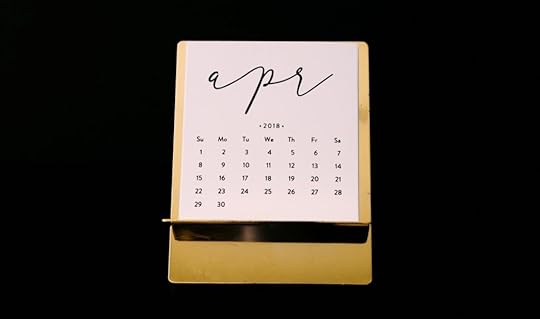 
Charles Deluvio / Tech Crunch
Facebook was all business in 2018, taking major steps towards repairing its reputation after suffering hard hits from the Cambridge Analytica scandal and other platform misuse. New tools, rules, and processes were introduced to improve user privacy and advertiser transparency across the platform. Here’s a breakdown of the changes Facebook made to advertising on its platform in 2018.
Info and Ads
Over the summer, Facebook rolled out an Info and Ads feature. Info and Ads is a new tab on Facebook pages where users can view all active ads the page is running across any Facebook-owned platform, including Instagram. The feature was created to improve transparency, allowing users to see ads that are targeting them.
Verification
One issue Facebook has had is fake or misleading pages that acquire large followings for misuse. Facebook addressed this issue by requiring verification from pages with a big following. If a page fails to complete or clear the verification process, it is no longer able to post. Additionally, Facebook added information visible on pages, such as the date the page was created, primary country locations the page is managed, its history of name changes, and more.
Political Ads
After experiencing so much controversy over the misuse of political ads during the 2016 U.S. presidential election, Facebook made some changes to improve the transparency of these types of ads. There is now a new authorization rule for electoral and issue ads: advertisers who want to run such ads must first obtain authorization from Facebook. These ads are also now labeled “Political Ad” in users’ feeds, with “paid for by” information clearly displayed next to it.
Additionally, all electoral and issue ads are now searchable in a Political Ads Archive, where users can see all political and issue ads on Facebook for up to seven years. For publishers and researchers, Facebook also introduced the Ad Archive API, which helps publishers and journalists analyze and investigate political or social issue ads shared on Facebook.
Ad Metrics
Facebook simplified its ad metrics with new labels, “estimated” and “in development,” and removed unnecessary and confusing metrics to improve the advertising experience. A metric is labeled “estimated” when the outcomes are based on sampling or modeling. Metrics are labeled “in development” when they are evolving as Facebook improves ad products and measurement methodologies. The following are the metrics Facebook removed:
Actions
People Taking Action
Cost per Any Action
Amount Spent Today
Button Clicks
Canvas Component Time Percentage
Carousel Card
Link Click Destination
Mobile App Actions Conversion Value
Page Mentions
Page Tab Views
Cost per Page Tab View
Positive Feedback
Negative Feedback
Social Reach
Social Impressions
Social Clicks (All)
Unique Social Clicks (All)
Targeting Options
Facebook announced an in-depth review of its ad targeting options, which is ongoing, to remove anything that could be used for malicious purposes. In August, Facebook removed more than 5,000 ad targeting options that could be misused for discriminatory advertising. The platform is also actively reminding its advertisers of its anti-discrimination policies.
Third-Party Data
Facebook has cracked down on its rules for data obtained through third parties used to target audiences. The platform removed Partner Categories, which used information from third-party data providers for targeting purposes. Additionally, businesses must indicate precisely where they originally acquired their customer information for a Custom Audience from one of the following sources:
Directly from customers – Information was collected directly from customers
Customers and partners – Information was collected directly from customers and sourced from partners (i.e. agencies)
Directly from partners – Information was sourced directly from partners (i.e. agencies or data providers)
Facebook is also introducing new requirements for businesses that share the Facebook pixel and offline event sets to further protect user privacy.
Brand Safety Tools
Facebook gave advertisers better control and visibility for ads in Facebook in-stream video, Instant Articles, and Audience Network, such as the ability to block lists and exclude brand-sensitive content categories. Additionally, Facebook rolled out publisher lists and publisher delivery reports to all advertisers to help businesses determine whether certain publishers align with their brand safety expectations.
Ad Experiences
Users can now share feedback for specific ads to help Facebook identify bad ad experiences. Under the Ads Activity tab, users can hit the “Leave Feedback” button for ads they’ve recently clicked. Users can proceed to rate their purchase experience, which helps Facebook determine whether to ban the business that created the ad.
Updated Policies
Facebook updated its advertising policies to prohibit ads frequently associated with misleading or deceptive promotional practices. For example, ads promoting deceptive financial practices, addiction treatment centers, and bail bonds are now prohibited.
Here’s to a safer, more transparent year on Facebook!
Written by Anna Hubbel, writer at AdvertiseMint, best Facebook advertising agency
The post A Year in Review: Facebook Ad Changes in 2018 appeared first on AdvertiseMint.
January 21, 2019
Mobile Game Ads Attract, but Are More Likely to Cause Ad Fatigue
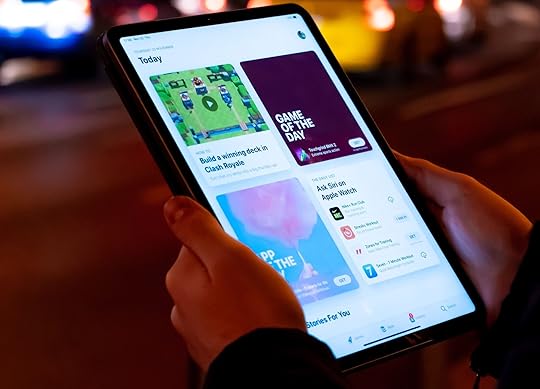 January 21, 2019
January 21, 2019Anne Felicitas, editor at AdvertiseMint, Facebook ads agency
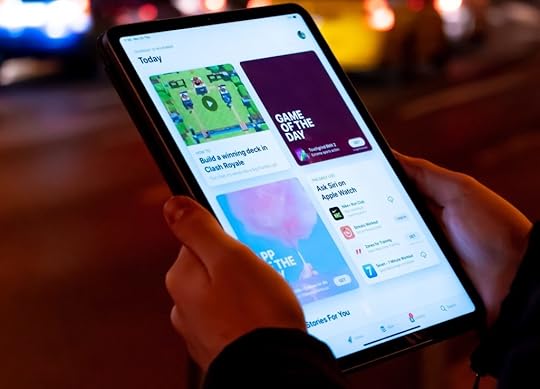 
Daniel Korpai / Tech Crunch
A nerd raised on outdoor activities, books, and moderate TV viewing, I never would have expected to become an avid gamer, especially since video games, which don’t appeal to me, were never part of my upbringing—yet, here I am.
My vice? Cookie Crush, a mobile app game I play through Facebook Messenger. Donuts, cookies, and jellies fill the screen, and I’m tasked with clearing the board by combining sequences of the same dessert. I play the game more often than I should—late night on my bed, while waiting for my takeout at a restaurant, and even during work hours.
It turns out, I’m not the only one hooked on mobile app games. According to Emarketer, mobile gamers like me make up 88 percent of digital gamers, spanning all ages. Because mobile game apps are easy yet entertaining, they appeal to both novices (even those who have never touched a controller) and hardcore video gamers. By the end of this year, Emarketer expects US mobile gamers to reach 147 million.

The popularity of mobile games brings ad opportunities to digital advertisers, who can deliver ads to a large audience open to sponsored messages. As Emarketer reported, a 2018 Jun Group survey of 500 US mobile users revealed that 49 percent of participants believed mobile games to have the best ad experiences. Although the study didn’t indicate the reason, it’s not hard to imagine why gamers enjoy the ads: rewards.
Unlike social feed ads, mobile game ads often incentivize users into watching ads, often in their entirety. In exchange for attention, gamers can win gifts such as coins, lives, and access to higher levels. The incentive works. According to a Facebook study, three in four mobile gamers welcome ads in exchange for free access and gifts. Watching one ad after another to earn coins and to access free content is a much better option than shelling out real money.

Yet, incentivizing gamers into watching an ad has one big drawback. There isn’t a large variety of ads served to app games. In fact, when I play games through Messenger, I see ads from only a handful of advertisers, and the ads I watch are usually the same. As my game falls into ad break after ad break after ad break, which happens after completing a level, I often see the same ads over and over again, until I experience ad fatigue so extreme I hide the ads for being “repetitive,” hurting the advertisers’ relevance score.
Because there is fewer competition for ad space on mobile app games, one user can see the same ad more than ten times in one day—that’s more than double the recommended frequency rate of four. With mobile game ads, refreshing your ads every two weeks no longer suffices.
Of course, refreshing ads once a week or less is tedious work, but refreshing ads doesn’t necessarily mean crafting new creatives from scratch. Refreshing ads can be as easy as segmenting a long ad into several shorter ads, for example, turning one 15-second video to 12 three-minute videos.
Users may prefer in-app game ads over regular social media ads, but they won’t like it as much if they see the same ad too often in a day. Refreshing ads once a week—or less—may just be enough to combat ad fatigue.
By Anne Felicitas , editor at AdvertiseMint, Facebook ads company
The post Mobile Game Ads Attract, but Are More Likely to Cause Ad Fatigue appeared first on AdvertiseMint.
How to Hide Your Facebook Post from a Specific Person
 January 21, 2019
January 21, 2019Anna Hubbel, editor at AdvertiseMint, Facebook marketing agency

At one time or another, we all want to share a post that we don’t want a particular person to see. Whether it’s a friend or boss from work, someone who knows the person you just broke up with, or a family relative who just doesn’t get your sense of humor, there may be someone who you’d rather didn’t see the photo or status you’re dying to post. Thankfully, Facebook allows us to specify who can and can’t see something we share on our profiles for precisely this type of scenario.
Step 1: Navigate to your Facebook profile. Click inside the “What’s on your mind?” space and start creating your post.

Step 2: With the status window open, select where you want your post to appear: News Feed, your Story, or both.

Step 3: After making your selection, click the dropdown menu to the right. Select the “Friends Except” option.

Step 4: Select from your list the friends whom you don’t want to see your post. Select “Save Changes.”

Step 5: If you selected both News Feed and your Story, complete steps four and five for the second option before clicking “Share.”

You’re good to go! Facebook has your back.
By Anna Hubbel , editor at AdvertiseMint, best Facebook advertising agency
The post How to Hide Your Facebook Post from a Specific Person appeared first on AdvertiseMint.



